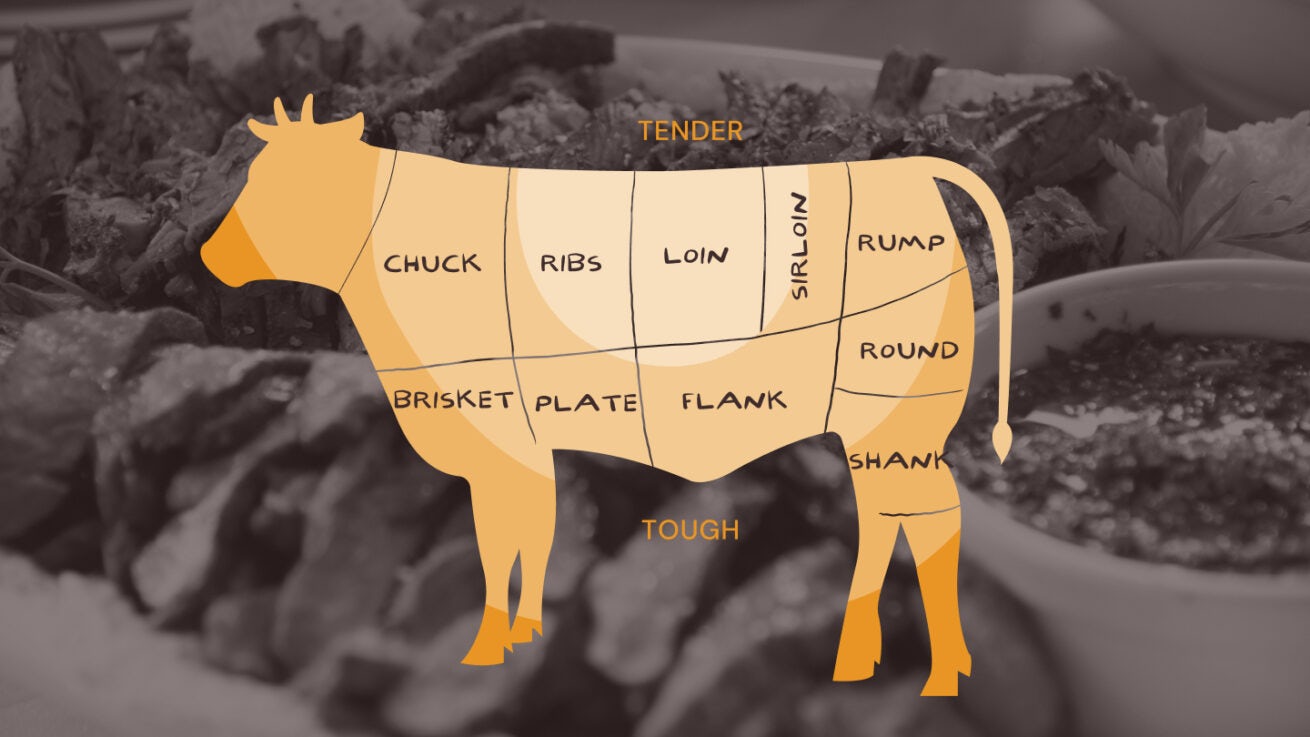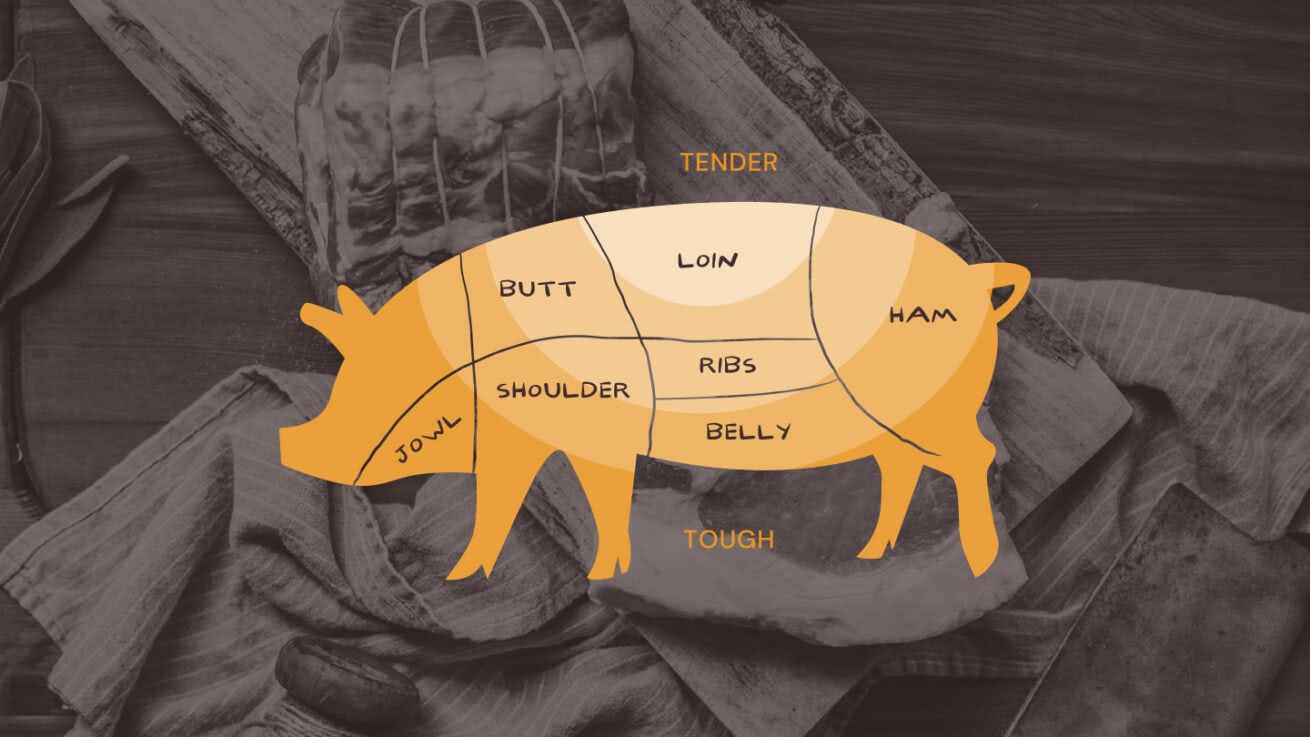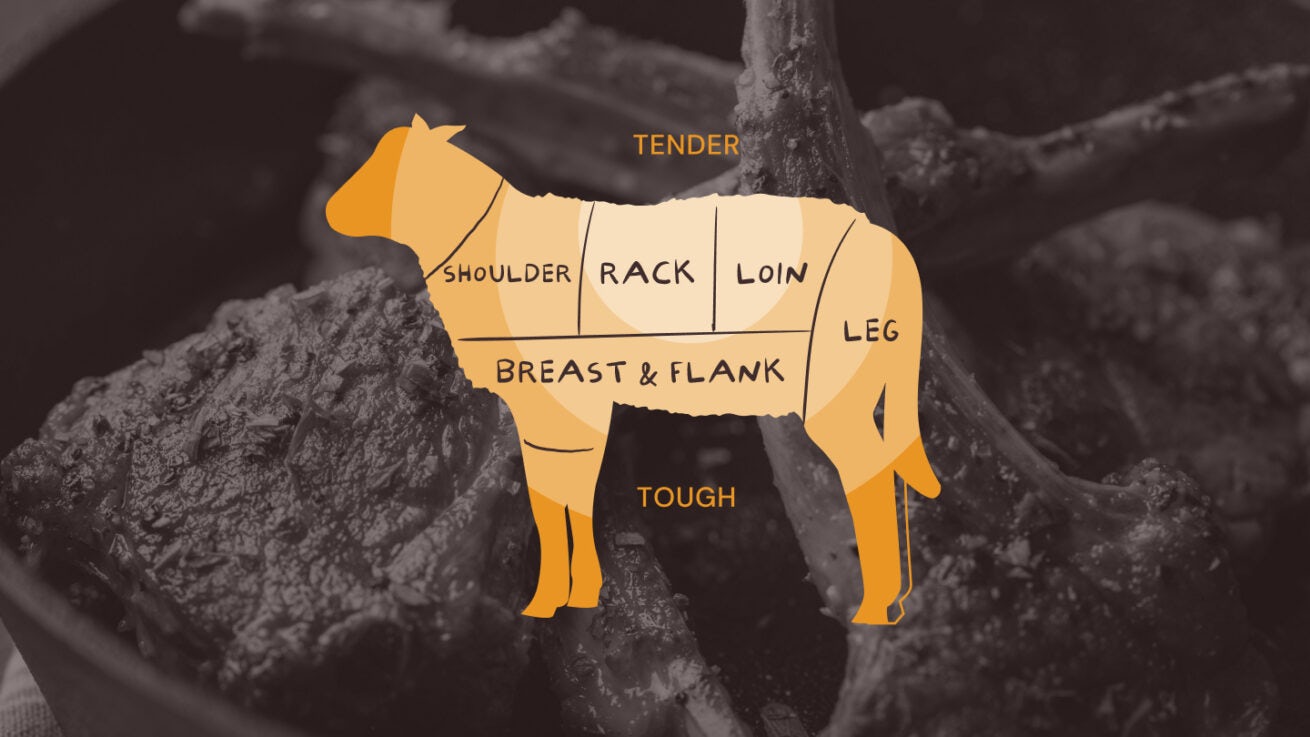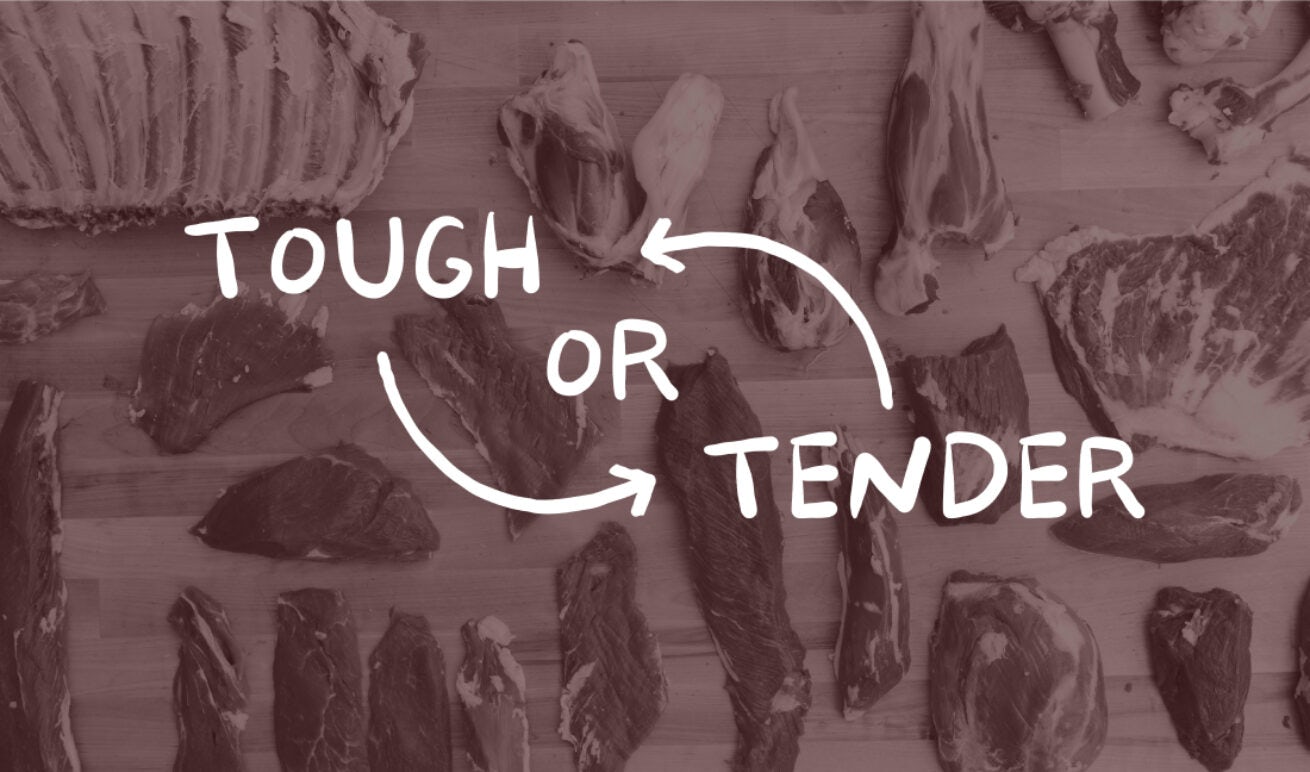
Related article
Curious about approximately how many pounds of chuck steaks, rib-eye steaks, and ground meat you get from 1/4 beef? And how to cook all that meat?
Good Meat BreakdownBulk BuyingPrepare to Buy in Bulk

The amount of meat you might buy for a year depends on your household size and your eating habits. Does your table include six voracious meat eaters? Are you a couple that prefers pork over anything else? Do you grill sausages and barbecue pulled pork all summer, but braise beef and roast lamb leg in the winter?
Consider your household eating habits carefully and, for those first-timers venturing into bulk meat buying, err on the side of less meat for your inaugural adventure. It’s better to run out of freezer meat than end up with an unusable surplus.

Informed with some smart guesstimates, follow this approach to calculate your yearly needs for each type of meat you plan to buy. After you have figured out your yearly average, refer to the meat yield table and graphics below to determine what carcass share most likely suits your household.
Keep in mind that the numbers you calculate are helpful estimates. You will learn a lot about your household eating habits after your first year spent eating from the freezer. Furthermore, when you commit to buying an animal share from a producer, the amount of meat, though somewhat predictable, will be a bit different every time. This is because you are reserving a portion of an actual carcass and those animals grow differently from year to year. In the table below we provide a predictable range for each species and share size, but confirm with the producer what their range is before you commit.
Now that you know how much meat you eat, it's time to figure out which meat share is right for you. First, let's familiarize you with a couple of terms.
Livestock weights are measured at two key points: while the animal is alive, known as live weight, and after the animal is slaughtered, chilled, and ready to be butchered, known as carcass weight. Removing the blood, hide, head, feet, and organs make for a dramatic difference between these two weights. The carcass weight can be anywhere from 50% – 70% of the live weight, depending on species, age, how much they had to eat, and even cleanliness. If you are charged by carcass weight, the price per pound will be higher than if you are charged by live weight.
The weight of what you will take home will be less than the total carcass weight that you paid for. During the butchering process, inedible parts are trimmed away. This includes bones, glands, fat, and bits of unpalatable meat. The total weight of meat after all bones and inedible trim is removed is called the boneless meat yield or edible meat yield. This is often around 65% of the carcass weight. If you choose to include bone-in steaks or other bone-in cuts with your order, your take-home weight will be higher, but keep in mind that the edible meat yield stays the same since no one is eating those bones (except maybe the dog).
How much freezer space do I need if I’m buying in bulk from a farmer?
Related article
Curious about approximately how many pounds of chuck steaks, rib-eye steaks, and ground meat you get from 1/4 beef? And how to cook all that meat?

Related article
Curious about approximately how many pounds of ham, shoulder, and belly meat you get from 1/2 of a hog? And how to cook all that meat?

Related article
Curious about approximately how many pounds of rack, leg, and shoulder meat you get from a whole lamb or goat? And how to cook all that meat?

Knowing a little bit about animal anatomy will help you successfully cook any cut.
Let's Break Down the Best Ways to Cook All Those Cuts

We teamed up with our friends Tia and Matthew Raiford from Strong Roots 9 and Gilliard Farms to create this series of cooking videos.

Sign up for our newsletter. We’ll keep you informed and inspired with monthly updates.